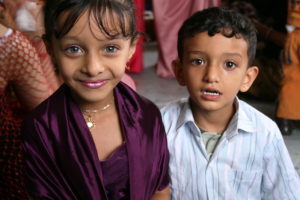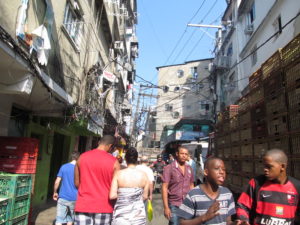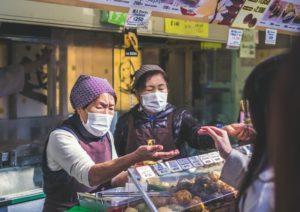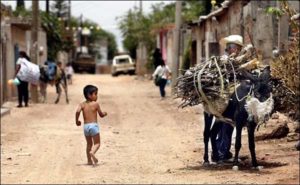
Guam is a U.S. island territory in the Western Pacific with a population of slightly less than 170,000 people. There are multiple U.S. military bases on the island, which many consider critically important bases for U.S. strategic interests in the Pacific. The bases also provide the island with its principal source of income. Aside from being one of the military’s crown jewels, Guam has a rich indigenous (Chamorro) culture and beautiful coral reefs surround it. While not as beautiful but still impressive, Guam has a relatively robust system of sanitation. Here are 10 facts about sanitation in Guam.
10 Facts About Sanitation in Guam
- Widespread Access to Safe Drinking Water: According to the World Health Organization (WHO), nearly 100% of people in Guam have access to a safe source of drinkable tap water. However, international travelers have only scored Guam’s drinking water as “moderate” in the categories of quality, pollution and accessibility.
- The EPA Funding Water Projects: In 2020, the U.S. Environmental Protection Agency (EPA) is committing more than $10 million to improve Guam’s drinking water. This money is going toward upgrading infrastructure, treatment systems and distribution facilities. Plans are also in place to promote water re-use and to develop methods of recycling the large amounts of stormwater that Guam receives.
- Improved Sanitation Facilities: Nine out of 10 people in Guam have access to an improved sanitation facility. This is a good sign for Guam’s population and its efforts to promote a sanitary society.
- Trash Collection: Guam Solid Waste Authority (GSWA) provides a trash collection service essentially identical to the service found in the vast majority of continental United States cities. Paying customers (~16,000) receive rollable trash bins which they place outside their homes on a specified day. Trucks collect this garbage and then dump it in a landfill. Non-paying customers can also bring their trash to a local servicing station.
- Recycling: Customers of GSWA also receive recycling carts for paper products, aluminum/metal cans and certain plastics. GSWA collects recycling twice a month. Similar to trash collection, non-paying customers can recycle at local “residential transfer stations.” These stations also have facilities for recycling glass and cardboard.
- Coastal Cleanup: Guam holds an annual coastal cleanup day every September. Thousands of volunteers partner with NGOs and governmental organizations to keep Guam’s beaches clean. This is one way that local people prioritize their island’s sanitation.
- COVID-19 Risk Due to Bases: One might consider that Guam should be able to combat COVID-19 easily because of its remote location in the middle of the Pacific Ocean, however, the presence of two major military bases heightens the risk of disease spread on the island. In fact, U.S. military bases are often COVID-19 hotspots. With 35 airmen testing positive for the disease at Anderson Air Force Base, Guam is no exception.
- COVID-19 Measures: Guam has declared a state of emergency due to the global pandemic. The government requires that citizens wear a face mask when using public transportation, and they strongly recommend that people wear a mask whenever in public. Stores are taking extra precautions through increased sanitation, and most restaurants have closed for dine-in services, but many are preparing to re-open.
- Grocery Delivery: A village mayor in Guam has partnered with a local Pay-Less supermarket to provide a grocery delivery service to all village residents. The service is called Grocery to Go and provides a safe way for citizens to obtain food during the global health emergency.
- Mask Donations: GTA Teleguam, the largest telecommunications company in Guam, is donating 10,000 masks to healthcare clinics and nonprofits on the island. This is a massive boon for families struggling financially, as they will not have to worry about purchasing these critical sanitation items.
As these 10 facts about sanitation in Guam show, the island has a solid foundation of water, sanitation and trash systems. The massive coastal cleanup and the community-driven efforts to combat the spread of COVID-19 clearly demonstrate the commitment of the islanders to their home. Although the pandemic is putting Guam’s sanitation and health facilities to the test, individual citizens and organizations are rising to the challenge.
– Spencer Jacobs
Photo: Department of Defense

 Chile is a small, narrow country in South America blessed with magnificent mountains and gorgeous Pacific Ocean views that attract tourists from all over the world.
Chile is a small, narrow country in South America blessed with magnificent mountains and gorgeous Pacific Ocean views that attract tourists from all over the world.  Hunger in Croatia has been a
Hunger in Croatia has been a  Yemen is currently facing the
Yemen is currently facing the  COVID-19 has decimated the people of Brazil as 15,000 to 30,000 new cases are reported daily. As of July 31, 2020, the country had
COVID-19 has decimated the people of Brazil as 15,000 to 30,000 new cases are reported daily. As of July 31, 2020, the country had 

 Amidst the COVID-19 pandemic, women have assumed positions of leadership in several fields to fight the virus. Women work hard at home to take care of their families, while also constituting a majority of those on the front lines in the global healthcare industry. They are discovering innovative new ways to generate income through agriculture, and are even manufacturing masks in refugee camps. Here are a few of the many heroic responsibilities undertaken by women during COVID-19.
Amidst the COVID-19 pandemic, women have assumed positions of leadership in several fields to fight the virus. Women work hard at home to take care of their families, while also constituting a majority of those on the front lines in the global healthcare industry. They are discovering innovative new ways to generate income through agriculture, and are even manufacturing masks in refugee camps. Here are a few of the many heroic responsibilities undertaken by women during COVID-19. A few weeks ago, Mexican
A few weeks ago, Mexican 